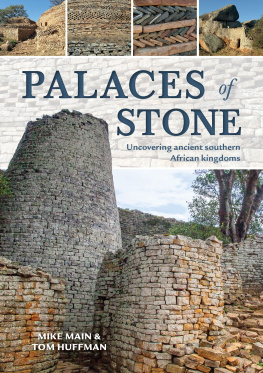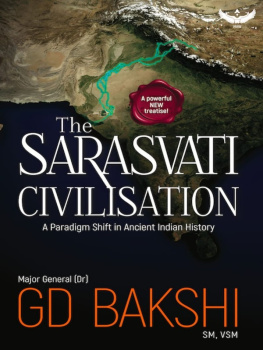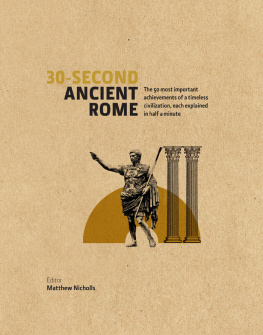THOMAS N HUFFMAN
MAPUNGUBWE
ANCIENT AFRICAN CIVILISATION ON THE LIMPOPO
Please remember that without an official permit visitors, including archaeologists, are not allowed to remove artefacts from any site within the basin.
Wits University Press
1 Jan Smuts Avenue
Johannesburg
2001
South Africa
http://witspress.wits.ac.za
ISBN 1-86814-408-9
ISBN 978-1-86814-408-2 (Print)
ISBN 978-1-86814-649-9 (PDF)
ISBN 978-1-77614-300-9 (EPUB)
ISBN 978-1-77614-301-6 (MOBI)
Copyright 2005 Thomas N Huffman
All rights reserved. No part of this publication may be reproduced, stored in a retrieval system, or transmitted in any form or by any means, electronic, mechanical, photocopying, recording or otherwise, without the prior permission of the publishers.
Cover by Limeblue, Johannesburg, South Africa
Text design by Orchard Publishing, Cape Town,
South Africa
Printed and bound by Creda Communications
Cape Town, South Africa
CONTENTS
ACKNOWLEDGEMENTS
I am indebted to John Calabrese, McEdward Murimbika, Alex Schoeman, Jeannette Smith and Marilee Wood for the use of their research results. Lance Gewer of Icon Productions made available Lance Pennys artist impressions of Mapungubwe on is courtesy of the Trigonometrical Survey of South Africa. Finally, I am grateful to the various organizations that have supported our research in the Mapungubwe area, in particular De Beers, the Mellon Foundation, the Indigenous Knowledge Systems of the National Research Foundation, SANParks and the University of the Witwatersrand.
Location of the Mapungubwe Park and important sites
OCCUPATION OF THE SHASHE-LIMPOPO BASIN
List of the important places and events in their chronological order.
INTRODUCTION
Between AD 900 and 1300, a period known as the Middle Iron Age, African people in the Shashe-Limpopo basin developed the first complex society in southern Africa. Characterised by sacred leadership and distinct social classes, this society also created the first town, the first king, the first stonewalled palace and the capital of the first state. Because of these firsts, the Mapungubwe Cultural Landscape (also known as the Mapungubwe National Park) has become one of South Africas World Heritage listings. This international status recognises the importance of Mapungubwe to the African past.
The World Heritage area is a remarkable example of a prehistoric cultural landscape, as recent settlement has not disturbed the most important sites. Indeed, each of the three capitals represents a separate slice of time first Schroda (AD 9001000), then K2 (10001220) and finally Mapungubwe itself (12201300). Furthermore, many ordinary homesteads have not been disturbed, except by natural forces, since the time they were abandoned. As a result, archaeologists have been able to reconstruct the changing uses of the landscape during the rise of Mapungubwe.
Mapungubwe was the forerunner of the famous town of Great Zimbabwe, another World Heritage site about 200 kilometres away. Indeed, without the earlier events and developments in the Shashe-Limpopo basin, Great Zimbabwe would not have existed. By the 15th century, the type of society developed at Mapungubwe had spread over an area the size of France.
What is more, essentially the same type of society lives on today in Venda, although a direct genetic link does not exist. Mapungubwe people are gone, but the culture is by no means dead.
Because of this cultural connection to Great Zimbabwe and then the Venda people, it is possible to use historical and traditional evidence to understand the evolution of Mapungubwe. The story begins over 1000 years ago and involves the wildlife and geography of the area, as well as its people.
GEOLOGY AND CLIMATE
The Shashe-Limpopo basin lies in what geologists call the Limpopo Mobile Belt between two ancient continents, the Zimbabwe craton and the Kaapvaal craton (South Africa). Granite forms the two cratons to the north and south, while erosion over many millions of years has produced the sandstones in the basin. As the continents moved, cracks appeared in the earths crust, allowing magma to come up from the earths core to form basalt sheets and dolerite dykes. One impressive dyke standing near Mapungubwe looks like a man-made wall.
Over time, the Limpopo River in the centre of the belt changed course, creating the escarpment to the west of Mapungubwe. More recent fluvial terraces cover the valley floor. In the time of Mapungubwe, the Limpopo itself flowed permanently, but the Shashe was a river of sand with water underneath. When the Shashe occasionally floods, it acts as a dam wall and backs up the Limpopo for several kilometres. The short but narrow gorge downstream of the confluence enhances the dam effect, and depending on rainfall, flooding would have been a regular occurrence. In fact, during the Middle Iron Age, the Limpopo was the Nile of Southern Africa.
The climate would have supported dense forests with ilala palms (Hyphaene natalensis) alongside the riverbanks. Thoughthe forests have now mostly disappeared, the floodplains still support salt-bush (Salvadora angustifolia) where the soils overlie basalt, while mopane trees (Colophospermum mopane) grow elsewhere in the valley and on the plateau above.
All these natural features played a part in the rise of Mapungubwe.
Looking north across the Shashe-Limpopo confluence
Typical sandstone koppie (left) and dolerite dyke (right)
SCHRODA
The capital
African farmers were absent from the Shashe-Limpopo basin between about AD 600 and 900, because the climate was not suitable. At this time, Zhizo people (named after their characteristic pottery) lived in better-watered areas in southwest Zimbabwe and eastern Botswana. Some Zhizo people moved south from Zimbabwe in about AD 900 and established a settlement at Schroda, near the banks of the Limpopo. Cattle dung and domestic animal bones show that they herded cattle and small stock, while grindstones, the burnt remains of grain bins and the shapes and sizes of their pottery attest to farming. The size of the settlement suggests that some 300500 people lived there.
Excavations in the chiefs area at Schroda, with the Limpopo in the background
Schroda taken from the name of the form was the largest Zhizo settlement in the basin at the time, which indicates that it was the capital. Throughout southern Africa, settlement size was related to male political power. As a rule, the chief was the wealthiest person in the chiefdom, accumulating more cattle than anyone else through court fines, forfeits, tributes, raids and the high bride price of his daughters. Because of this wealth, the chief had more wives, more fields, more followers and more court officials and therefore the largest settlement.















